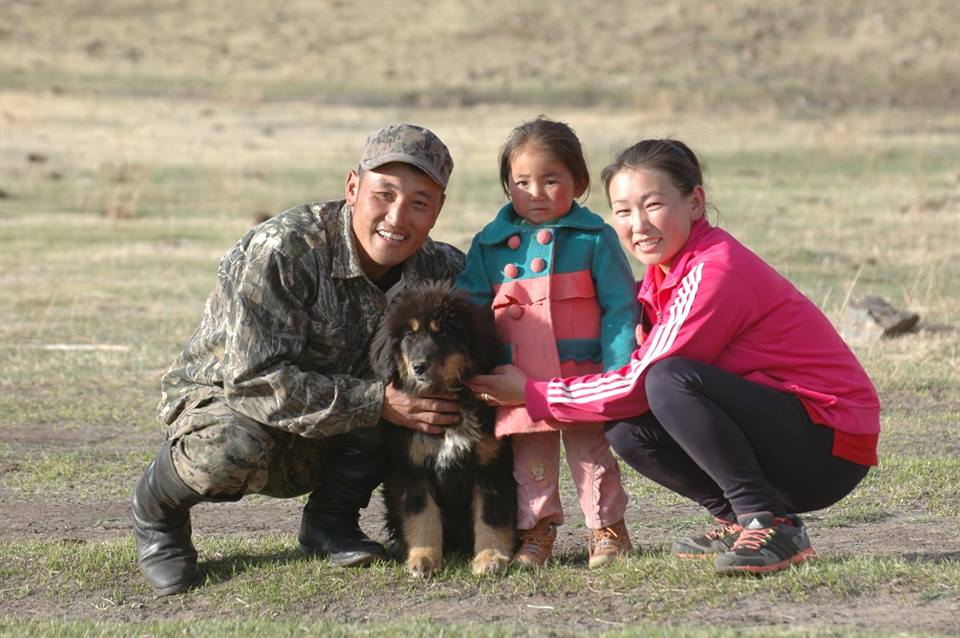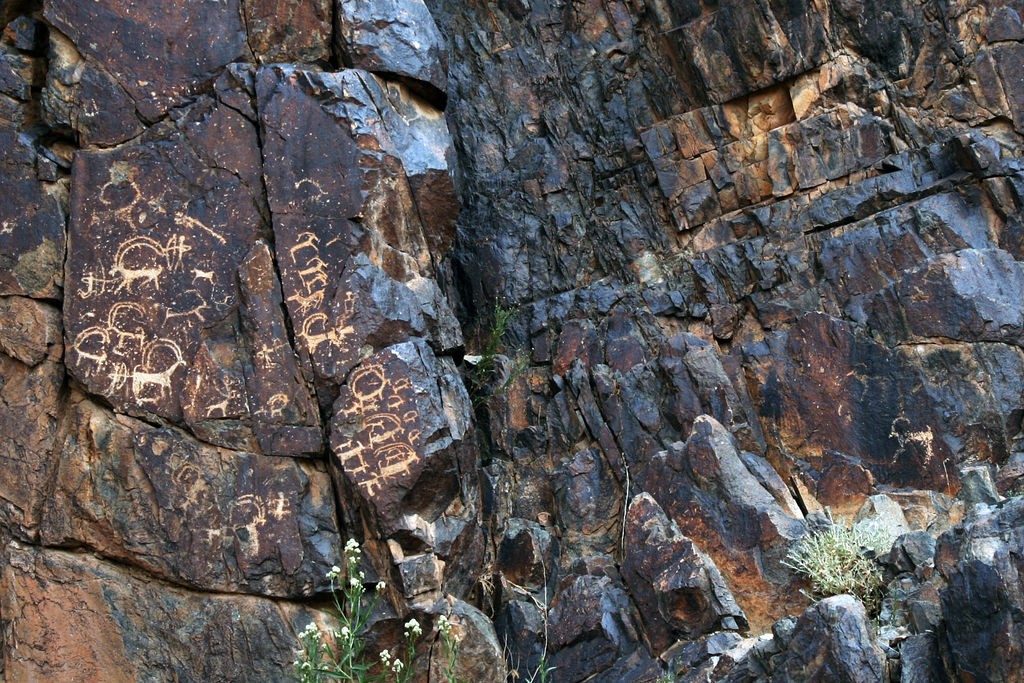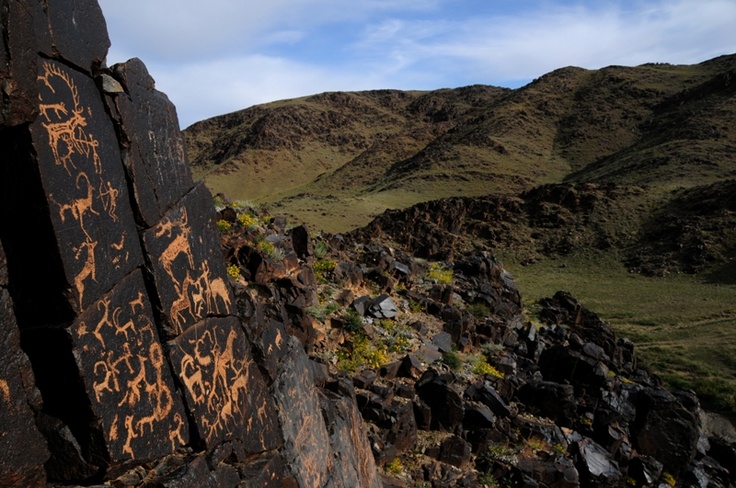BAYANGOBI VILLAGE TO BICHIGT VALLEY
As we continue across a changing landscape, we move from desert and steppe to foothills and into an area with a heavier wolf population. We have been seeing some real “success stories” during our journey. The anecdotal evidence is promising, but the research team reminds us that it will take a few years — once the first dogs are three years or older — to truly evaluate how well the protocols really work in the field.
The herding families seem to have really taken the project goals to heart and are diligently caring for their Bankhars following the training protocols closely. The project team has high hopes for some of these local partners, like one south Gobi family who received a dog from last years litter. Over a period of several months their Bankhar has developed the instinct to take the high ground and be hyper vigilant. He is with the herd 100% of the time. The placement has been a great success, and the family has not lost one animal to depredation since the dog arrived. The MBDP team hopes to use dogs like this one as “mentor dogs” to raise the next generation of pups, teaching them the right way to work their flocks — because “dogs learn best from other dogs.” Another excellent candidate for a breeder/trainer role, the family and their Bankhar can potentially pilot the project in this area. An important long term goal of the MBDP is to transfer the administration of the program to the local populations as much as possible.

Today’s drive day has some real highlights as we take some time to visit the legendary Bichigt Valley. The place-name means “valley of script” which is an apt description for the petroglyph complex. We get some time to explore around the ancient carvings etched into the smooth surface of the cliffs. This is one of the largest collection of petroglyphs of Mongolia, and is quite impressive, with a variety of motifs and techniques dating back to the Bronze age. The canyon is about 3 kilometers long and the rock art covers a period beginning in 3000 BC and continuing into the 8th century. The significance of this specific location is not known, but ancient residents used the walls as their canvas, depicting people, animals and scenes from daily life.
The rock art found here illustrates the development of culture in Mongolia over thousands of years. The earliest images reflect a time when the area was partly forested and provided a habitat for hunters of large game. Later images show the transition to herding as the dominant way of life. The most recent images show the transition to a horse-dependent nomadic lifestyle during the early 1st millennium BC, the Scythian period and the later Turkic period (7th and 8th centuries AD).
Looking at the stylized imagery on stone we can feel something of the connection between that history and the herders we have been meeting. An ancient way of life is being preserved, and with it a sense of rugged independence that has defined their culture across the centuries.

[Photos courtesy Mongolian Bankhar Dog Project/OEX]


You must be logged in to post a comment.